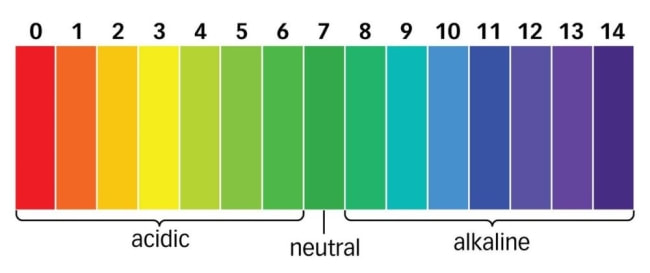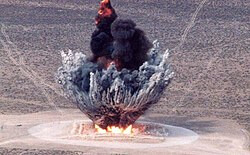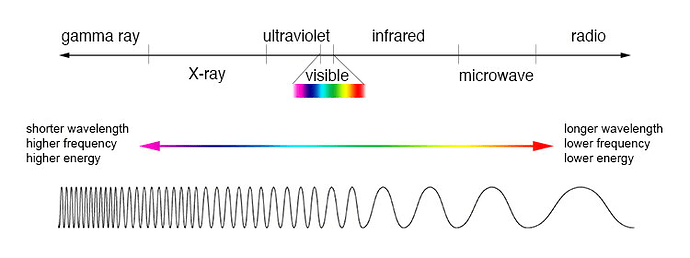I have officially “no-lifed”
>:)
@Cryonical @loreConquest12 @liu Hello
Click a magic to become blasted with knowledge!
Acid
Acids, the opposite of bases and are responsible for causing sour tastes in foods, Acids are well known and are usually portrayed as green hot, bubbling liquids, although, most acids actually resemble water, they have no color in most cases.
There are two types of acids, strong, and weak, but before we can talk about them, lets have a chemistry lesson shall we?
Acids are substances that when put into an aqueous solution, release H+ Ions, Bases on the other hand, release hydroxide Ions.
Now we can talk.
Strong acids are substances that release ALL of their H+ ions into a solution, whereas weak acids only partially release them all, keeping a few.
If the unfortunate event that acid is spilled onto something, neutralizing it with a base of equal power can turn it into harmless water.
The PH scale (potential hydrogen) can be used to determine how basic/acidic something is, the more acidic, the lower the pH.

Litmus paper is a common lab item used to determine a substance is more basic or acidic, bases turn the paper blue, acids turn the paper red.
“corrosive” is a common term used to describe something that has acidic/basic properties and can dissolve substances.
Light
Light is a phenomenon when small subatomic particles known as photons enter our eyes at different angles and speeds, which thus produces the glowy thing we see in everyday life, as our minds have evolved to transform these electromagnetic waves into color and brightness.
Light particles bounce off surfaces as well, which is why rooms with more light appear brighter, since there are more photons in the local atmosphere.
Light is a special thing, for it belongs on something known as the “electromagnetic scale”
this scale measures the energy particles have when traveling, the speed and power of these particles determines what they are, it also causes them to behave differently.
you may have noticed how radiation is on there, and thats because,
light is a form of radiation.
but before you worry about becoming a mutant, there are many different wavelengths of radiation out there, and majority of them are actually quite harmless, many household items produce radiation as well, like bananas, cars, televisions, microwaves, the device you are using to read this, even humans, all generate radiation, just at extremely low levels.
Radiation is only dangerous because of when at high levels, gamma particles can travel through your body and tear your DNA apart, causing defects and sickness.
majority of the energy levels we experience don’t go past visible light, so we are ok.
Explosion
Whether you have seen it in movies, video games, or maybe real life, we can admit, explosions are both awesome, and terrifying.
but, what exactly, is an explosion?
Well, that’s why I’m here.
combustion is an event where energy is violently exerted outwards, usually creating high temperatures and highly pressurized gases, there are different kinds of explosion as well, supersonic explosions are created high explosions known as detonations and travel through shockwaves, where subsonic explosions are created by low explosions and combust slower through a process known as deflagration.

combustions can be caused by usually volcanic or stellar activity, via violent volcanic eruptions or stars collapsing to create supernovae, the largest known explosions in the universe.
Combustions can also be recreated using chemicals and elements! sodium and water is a famous example of a type of explosion, as the sodium violently combusts and lights on fire in water (ironic am I right)
electromagnetic explosions also happen, A high current electrical fault can create an ‘electrical explosion’ by forming high energy, which rapidly vaporizes metal and other nearby materials.
Fire, lightning, and plasma
Have you ever had that moment when the science teacher asks you guys, “what are the three states of matter” and one of the kids says 4, and somehow, he’s correct?
well that’s because plasmas are a fourth state of matter.
Plasma is a state of matter that exists as highly ionized gas, it takes on many forms, but its two most common are fire and lightning.
Lightning is caused when protons on the ground electromagnetically react with electrons in the clouds, you see, electrons want to be closest to the ground as possible, and will do any means necessary to travel down, this is how lightning is formed, essentially, its how electrons travel to the surface. Other than that, the eviroment that lightning strikes can also affect its color, teal, yellow, purple, even red and green, all exist as possible colors.
Fire burns because the ionized particles in it vibrate so fast due to high energy, it causes other things to vibrate as well, essentially creating a superheated chain reaction that causes the burn.
Plasma itself is well, plasma, ion gas I guess.
Shadow
An element I cannot say much about, shadow is well, really, the absence of light, or photons.
essentially our eyes require stimulation from those small particles to be able to see, and without those particles, the only thing that takes its place is well, darkness.
sorry if this one came out super short, its just there’s not a whole lot to say about shadows, they simply act as a filler for when light isn’t around.
Wood
Wood is the porous, fibrous, substance that trees use as a body, wood has many purposes as it acts as a support, and a way of transport with xylem and phloem, Wood is protected by a substance known as bark, which is a flaky object that keeps the wood inside a tree safe from natures fury.
Wood is extremely versatile in nature and thus is used in many things, such as furniture, building material, and fuel.
A chemical known as an extractive can change the color of wood.
Not all wood is the same, different woods have different flexibilities and properties, some are more brittle, others can be more flammable, etc…
Rings in wood can be used to measure a trees age, each ring is worth one year, trees that have more rings are older, these rings are formed because tree trunks grow in a radial form, spreading outwards as well as going up, essentially, the tree keeps adding new layers on itself every year.
Wood also is extremely important to forests and jungles as well, roots help keep the ground stable from erosion, and the wood itself provides food and shelter for animals.
Wood is a very special material indeed.
Crystal
Hey guys, whats your favorite color for crystal magic right now in AO?
is it perhaps Al₂O₃?
or maybe Be₃Al₂SiO₆
anyone here like KAlSi₃O₈?
personally, i think SiO₂ is the nicest color.
ok, enough fooling about, lets talk science.
Crystals are essentially extremely large, solid, chemical compounds, the type of color and the type of gemstone it is depends on what elements make up the crystal.
I’m not going to list what elemental compounds make what crystals, but you get the point.
The word crystal derives from the Ancient Greek word κρύσταλλος (krustallos), meaning both “ice” and “rock”
Examples of large crystals include snowflakes, diamonds, and table salt. Most inorganic solids are not crystals but polycrystals, i.e. many microscopic crystals fused together into a single solid unit.
Crystals are commonly recognized by their shape, consisting of flat faces with sharp angles. These shape characteristics are not necessary for a crystal, a crystal is scientifically defined by its atomic arrangement, not its macroscopic formation, but the characteristic shape is often present and easy to see to the naked eye.
Iron
Ah yes, Iron, the metal that makes the world go round, a powerful mineral found almost anywhere, we wouldn’t be here if iron didn’t exist.
Iron, or Fe, is the 26th element of the periodic table, it is a transition metal, its electron configuration is [Ar] 3d64s2, its atomic mass is 55.847 amu, and has a melting point of 2800 degrees farenheit.
Iron is in, a lot of stuff, its one of the most common elements of the universe, and it exists on earth in many forms, usually in compounds, but can exist on its own.
an example of an iron mineral would be hematite, hematite derives from the latin word hema, which means blood, which, iron happens to be in as well, in the form of hemoglobin.
Iron exists in many of todays modern machinery, it has a high melting capacity, thus making it useful for pots and cooking, it is used for building weapons due to its sturdy nature, and is even used in medication and paints.
when iron oxidizes, it creates reddish, orange plates clumsily to try and protect itself, this reddish crimson substance is commonly known to many as “rust”
The body of an adult human contains about 4 grams (0.005% body weight) of iron, mostly in hemoglobin and myoglobin. These two proteins play essential roles in vertebrate metabolism, respectively oxygen transport by blood and oxygen storage in muscles. To maintain the necessary levels, human iron metabolism requires a minimum of iron in the diet. Iron is also the metal at the active site of many important redox enzymes dealing with cellular respiration and oxidation and reduction in plants and animals.
Iron truly is a wonderful element, without it, i don’t think there would be an earth to live on, or a complete universe at that.
Water, snow, and ice
Water is a liquid of life, its simple, yet effective and iconic chemical for it, H2O, is a phrase known by many, water is just as beautiful and mysterious as the sea itself.
water is commonly found in many, many places, brackish water can be found forming ponds, rivers, and lakes, while seawater forms the massive ocean many have yet to explore.
Water is important to life as it helps keep the body moist, as well as transport substances and allow for cellular respiration, in fact, humans are made up mostly of water, exactly 70% of our bodies is the liquid we all love and know.
Ice is essentially frozen water, the particles have slowed down so much, they become a solid state, forming the icy cool crystal like object we put in our drinks.
there are may different things ice can do, for example, icicles form when water drops down in extremely cold temperatures, as the water falls, it builds an icicle that gradually builds as more water keeps adding on to it.
permafrost is when ice freezes underground in soil, and can remain frozen for over a year.
When iced is formed at extremely high altitudes, it freezes in a special way that creates snowflakes, when the flakes get heavy enough, the gently fall to the ground.
Snow generally tends to form when the atmospheric temperature is at or below freezing (0 degrees Celsius or 32 degrees Fahrenheit) and there is a minimum amount of moisture in the air. If the ground temperature is at or below freezing, the snow will reach the ground. While it can be too warm to snow, it cannot be too cold to snow .
Snowflakes are all random shapes and sizes as they are made up of crystals with various forms and shapes. Each snowflake forms in a hexagonal shape due to their structures being constructed mainly of stars, prisms and hexagonal plates however each one is completely unique, like the human finger print.
Earth
This one goes out to all the rock collectors out there, love you guys.
When you pick up a rock, what do you see?
Do you see just an ordinary pebble?
Or do you see a long and beautiful story waiting to be unfolded?
If the latter, you definitely deserve to read this.
Stones or rocks, are large, mineral compounds that depending on where they are or how they formed, can completely change the type, size, color, and density of a rock.
Generally, most stones are classified into three divisions, igneous, metamorphic, and sedimentary.
Igneous rocks are known to be formed deep underground by lava and molten stones.
Metamorphic rocks are created via the transformation from a preexisting stone, via the minerals inside undergo complex reactions or changes that completely alter the stone altogether.
Sedimentary rocks are formed when an accumulation of minerals on the earth’s surface becomes cemented by natural means, thus creating a new stone as well.
Stone color is interesting as it shows to composition of elements in a local area.
For example, rocks in England aren’t as red as ones from rural Zambia, as zambian rocks are higher in iron content, a previously mentioned element.
Stones can also have originated outside of earth, stones known as meteorites fall down and burn up in earth’s atmosphere before landing, in fact, many scientists believe dinosaurs went extinct because of a meteor known as the chicxulub meteorite.
Sand
Sand is essentially, extremely fine particles of grounded up rock and other things that have condensed into a large powdery mass, sand can come in a variety of colors depending on where it comes from, and how fine or rough the sand is depending on how big the particles are.
Desert sand is in fact known to be extremely sterile ,due to the dry, hot, and hostile environment it originated from, which prevents microbial activity.
Sand can also be fired at high power as an abrasive to remove things such as rust, this process is known as sandblasting, when a highly pressurized device fires sand at extremely high psi.
ash
Ash is something that I cannot say too much about, but essentially what ash is is the charred or burnt remains of an explosion or fire related activity.
Ash on it’s own is not extremely dangerous, but when in copious amounts of it, generally from wildfires, ash can pose a serious danger as it prevents fresh oxygen from entering lungs of animals and people, and gets stuck inside, which can lead to severe cancers and other health issues.
Ash can also be considered as another sterile substance, due to the nature of how it came from extremely high temperatures, which burned any microbes on what originally the ash was.
Poison
In biology, poisons are substances that can cause death, injury, or harm to organs, tissues, cells, and DNA usually by chemical reactions or other activity on the molecular scales, when an organism is exposed to a sufficient quantity.
The word “poison” was first used in 1200 to mean “a deadly potion or substance”; the English term comes from the "…Old French poison, poison (12c., Modern French poison) “a drink”, especially a medical drink, later “a (magic) potion, poisonous drink” (14c.), from Latin potion (nominative position) “a drinking, a drink”, also “poisonous drink” (Cicero), from potable “to drink”. The use of “poison” as an adjective “poisonous” dates from the 1520s. Using the word “poison” with plant names dates from the 18th century. The term “poison ivy”, for example, was first used in 1784 and the term “poison oak” was first used in 1743. The term “poison gas” was first used in 1915.
There are two main types of poisons, vemons and toxins, vemons are exclusive to animals while toxins can be artificially created as well, and aren’t as present in animals.
wind
Wind is a generally broad term used to describe air, which is essentially all around you.
Airs molecular composition consists of mainly of nitrogen, a gaseous element on the periodic table as a non metal.
Air also consists of other gases, like oxygen, hydrogen, argon, and carbons.
Wind is generally caused by meteorological activity concerning weather patterns and storms, monsoons are extremely dangerous as the wind is string enough to destroy homes and property.
Tornadoes form when warm, humid air collides with cold, dry air. The denser cold air is pushed over the warm air, usually producing thunderstorms. The warm air rises through the colder air, causing an updraft. The updraft will begin to rotate if winds vary sharply in speed or direction.
glass
Glass is the result of rapid cooling of molten sand, as a result it creates a non crystalline, amorphous solid, usually transparent in nature.
Glass is generally thought to be manufactured artificially, but glass can come in many forms in the wild, like obsidian and seaglass.
Credits and bibliography
This post was generally constructed with my knowledge and the wisdom of the wikipedia, not all facts for every element ate on here, if you are more interested in a specific element, the internet or individuals you know can be great sources of knowledge.
I will be updating this post frequently with more fun facts I find along the way.


